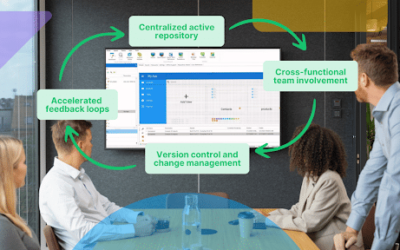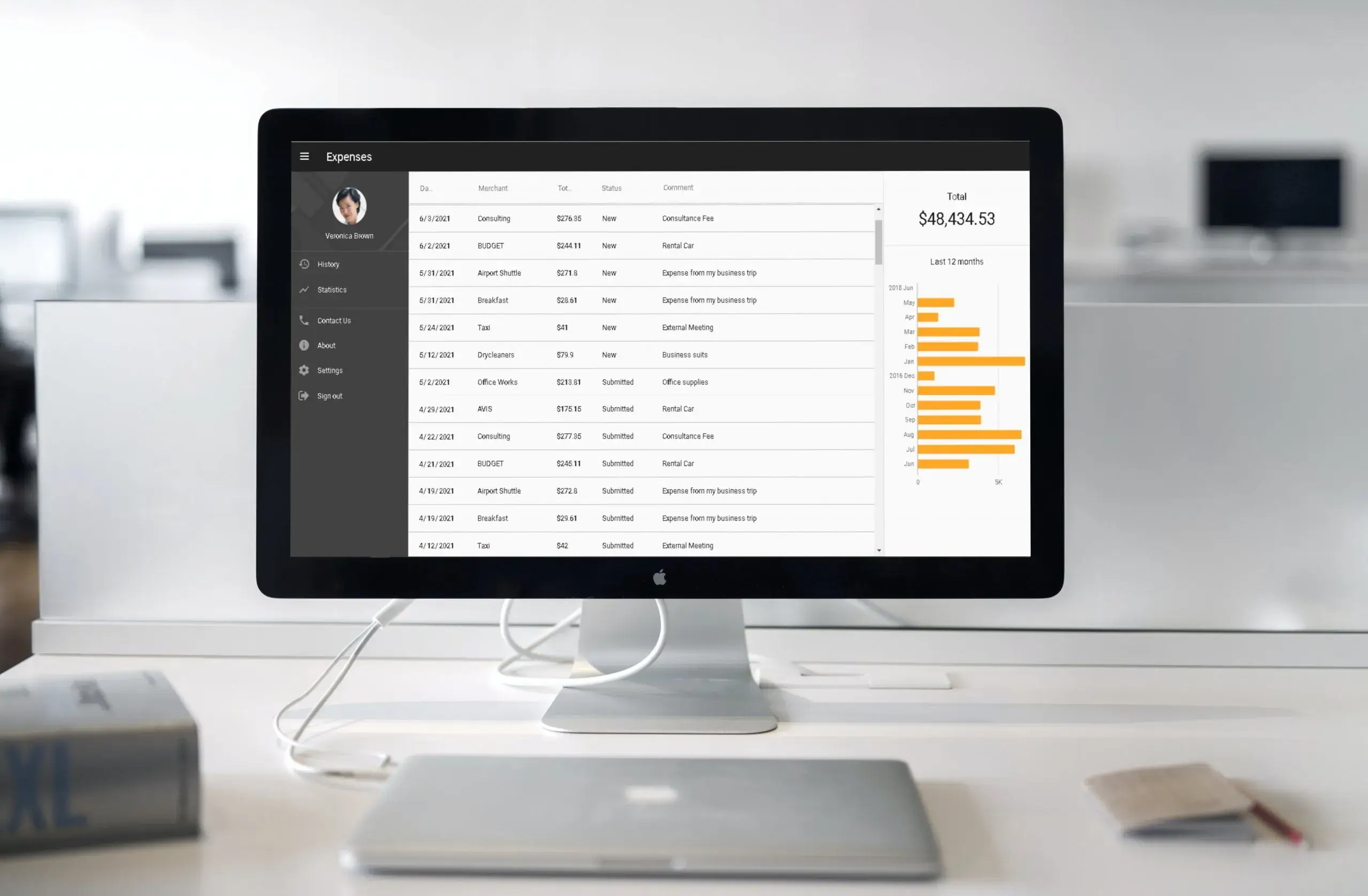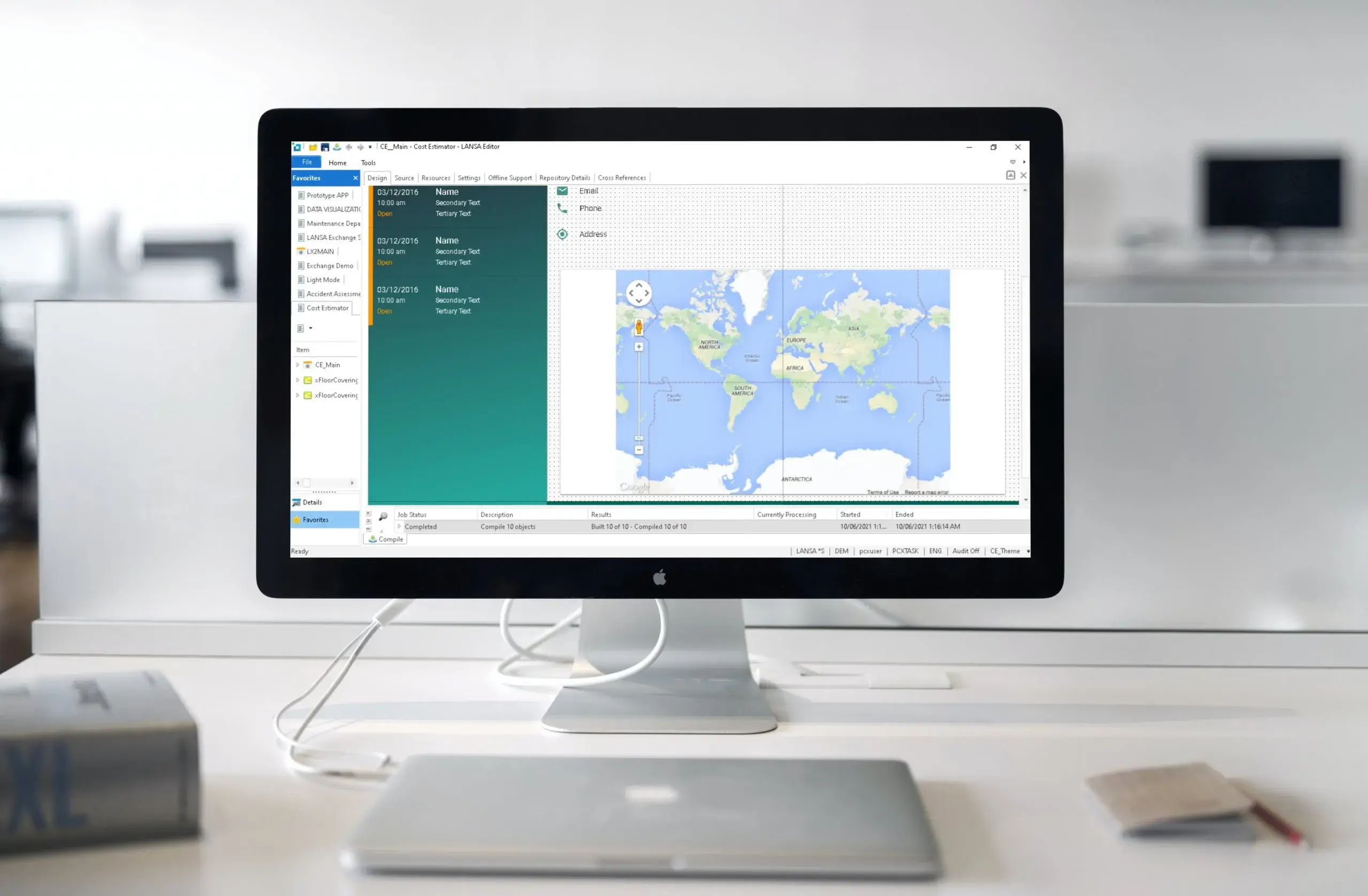Low-code and no-code solutions are a trend in the modern-day software development industry and there’s a good reason for that. More than ever before in this era of digital transformation amid global unrest and a turbulent economy, companies require flexibility. They need new, easy and affordable development tools in order to quickly adjust to changing market demands and new challenges. Low-code platforms meet these criteria better than any other type of solution.
That is why the low-code solutions market is growing so quickly. Companies release new tools and platforms every month. According to Gartner [1], the low-code technology market grew over 2020 by 23% in 2021, reaching $5.8 billion. The population of low-code developers is also soaring. IDC expects [2] the number of low-code developers around the world to grow with a CAGR of 40.4% from 2021 to 2025. This growth rate for low-code developers is roughly 3.2 times the 12.5% CAGR for the general population of developers worldwide.
What does an effective low-code development solution need to have in 2022?
The rising popularity of low-code platforms certainly isn’t a surprise to us at LANSA. This is because LANSA pioneered the low-code development niche. Our product, Visual LANSA, is one of the earliest low-code platforms. It allows organizations to modernize their legacy tools and build new enterprise-grade mobile, web, and desktop applications with ease.
At the forefront of low-code development from the outset, LANSA has a wealth of experience in the field. As a result, we can share the key components of a truly successful and powerful low-code platform.
Building a strong low-code solution is, of course, a highly comprehensive task. From a general perspective, however, it all boils down to three fundamental components or steps.
Step 1. Create a highly-functional and user-friendly low-code visual design solution.
Firstly, the tool must build applications and business solutions in a visual development environment and also require minimal coding skills. A strong low-code platform must have a graphical editor with a user-friendly and intuitive interface. Visual editors in low-code solutions typically involve pre-built, reusable components and a simple drag-and-drop process for rapid development. A highly functional visual editor lets development teams quickly build new enterprise applications and assemble work processes without writing and testing new code.
Visual LANSA is a good example of a low-code platform. It has a powerful visual editor that allows organizations to build and deploy new business apps in days. Its simple and convenient-to-use visual application builder is what allows organizations to increase development productivity tenfold or even more.
Want to know how easy it actually is to build a low-code mobile and web application using LANSA’s visual development solution? It is likely even simpler than you might expect. Here’s a short video showing how to quickly build responsive web apps using LANSA:
Step 2. Is it easy to enable simple integration with hundreds of services?
Next, developing an app quickly is only half of the battle, however. You also need to effectively integrate it into your existing system. Because of this, another crucial component for any modern low-code platform is the easy integration of newly developed apps. Your new apps have to play well with the other platforms and services on different layers of your enterprise IT network.
Visual LANSA, for example, includes CData Visual LANSA Connectors. This is a collection of more than 190 certified connectors. They allow you to easily integrate LANSA-built solutions with a wide range of popular on-premise and SaaS applications. These include solutions for CRM, ERP, marketing automation, accounting, and collaboration.
Using comprehensive metadata discovery for every data source, LANSA Connectors make it easy to explore data based on user identity. Similarly, flexible and extensible NoSQL flattening simplifies the direct connection of Visual LANSA with complex hierarchical data. As a result, you can easily customize the data model exposed by CData Visual LANSA Connectors. You can also add or remove tables/columns and change data types without requiring a new build.
LANSA’s hybrid low-code approach means you can integrate with anything and everything. More importantly, you can do it without creating time-consuming workarounds. Our integration solutions simplify how data gets transported between business processes. As a result, your developers can set up data exchanges and automate processes with confidence and minimum effort.
Here you can find a full list of CData Visual LANSA Connectors divided into categories.
Step 3. Can it provide single low-code language and cross-platform deployment?
Finally, the third fundamental component for a successful low-code platform is the “write once, run anywhere” development paradigm. In other words, developers use a single programming language for all versions of their products, even on different platforms. There is no need to develop and maintain app versions for all major platforms. Whether on desktop or mobile, a good low-code solution does everything possible to simplify and automate this process for users.
Visual LANSA emphasizes a simple approach to development. It is a major productivity-boosting component of its platform. LANSA allows every developer to work on any part of the application. It shields developers from having to support and become experts in many different languages and technologies. This is an essential advantage because it enables developers to focus on app creation rather than tech to deliver product. It also reduces delays.
Is it possible to code directly in the LANSA IDE?
Developers create entire applications in LANSA’s IDE. They also use the same development approach with every Visual LANSA application. As a result, you don’t need both front-end and back-end developers on your team. Every developer can create an entire web application from start to finish.
With Visual LANSA, and the ability to code directly inside the IDE, the bar for low-code integration is brought to a new height. The platform allows developers to use the same language and IDE for all parts of an application—client-side, server-side, and everything in between—increasing the speed and cost-efficiency of the process.
Furthermore, Visual LANSA is an example of a low-code platform that truly lets you deploy anywhere, including IBM i, Windows, the Cloud, and Linux. When many other low-code platforms are only able to provide limited deployment options, Visual LANSA enables businesses to deploy where it makes the most sense for them.
Want to know how exactly Visual LANSA’s hybrid low-code approach can reduce the complexities of app development and increase development productivity? Then you definitely should watch this video webinar featuring LANSA’s Eugene King as the main speaker. It explains how LANSA takes enterprise application development efficiency to a level beyond what traditional low-code development platforms can offer today.
Ready to adopt the most powerful low-code development platform on the market?
LANSA’s low-code platform combines all the right trends in modern-day software development and digital transformation. It helps organizations truly utilize the power of automation and digital transformation technologies. LANSA is the solution for organizations that need to implement application modernization and data integration quickly, reliably, and with limited developer resources.
If you’re interested in diving deeper into the field of low-code development technologies, we recommend you download this original white paper by LANSA titled “The Power of Coding in a Low-Code Solution.” In this whitepaper, we discuss the benefits of the low-code quick application creation process along with the benefits of traditional programming’s ability to solve complex integrations and problems, allowing developers to be more effective and efficient.
Ready to adopt Visual LANSA for your business needs? Get in touch with us to start utilizing Visual LANSA for your app development and modernization needs.
[1] https://www.gartner.com/en/newsroom/press-releases/2021-02-15-gartner-forecasts-worldwide-low-code-development-technologies-market-to-grow-23-percent-in-2021
[2] https://www.idc.com/getdoc.jsp?containerId=US47546621


























